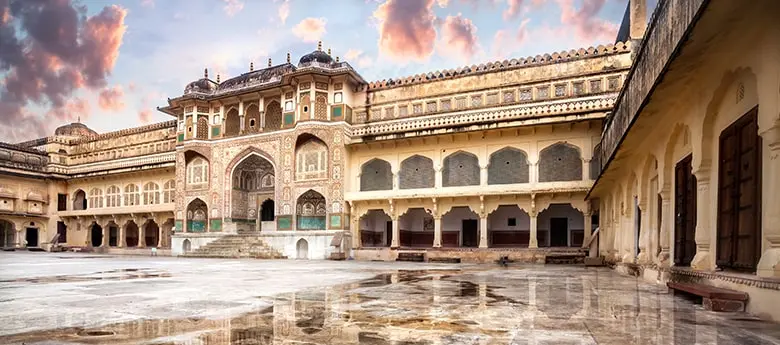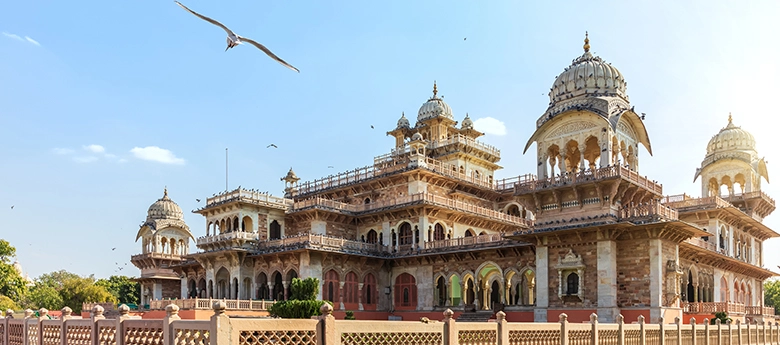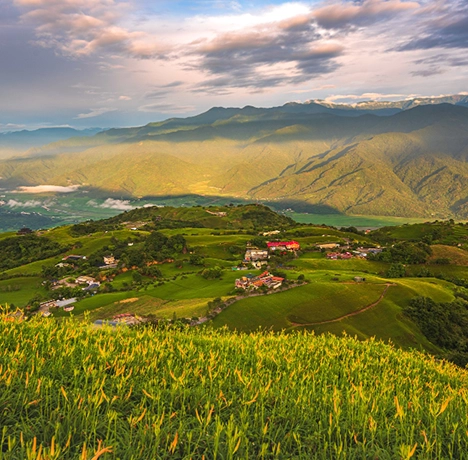7 DAYS BHUTAN
Overview
7 DAYS BHUTAN
(Phuentsholing, Thimphu, Punakha & Paro)
Tour Plan
Day 01: Arrival in Phuentsholing
On arrival in Phuentsholing, met by our representative, after clearing immigration formalities, check in at the Hotel.
Later in the day if time permits visit Zangtho Pelri: Situated in city centre, this small temple represents the heaven of Guru Rinpoche.
Later in the evening explore the local market.
Overnight at the hotel in Phuentsholing
Day 02: Phuentsholing – Thimphu (180 km, approx 7 hours drive)
After breakfast drive to Thimphu.
En route stop at Kharbandi Gompa, the beautiful monastery situated in garden of tropical plants and flowers. The monastery contains paintings depicting scenes from the life of Buddha and statues of Shabdrung Ngawang Namgyal and Guru Rimpoche. From the monastery garden there is a splendid view of Phuentsholing and plains of West Bengal and their tea gardens beyond.
Proceed further to Thimphu. This entire drive is very pleasant with numerous scenic spots en route. Lunch would be served en route at a tourist cafeteria.
On arrival, in Thimphu check-into the hotel. The capital town of Bhutan and the centre of government, religion and commerce, Thimphu is a unique city with unusual mixture of modern development alongside ancient traditions. With the population of about 90,000 it is perhaps still the world’s only capital city without a traffic light.
Evening an exploratory walk around Thimphu main street and market area..
Overnight at the hotel in Thimphu.
Day 03 : Thimphu
After breakfast, sightseeing in Thimphu valley including visit to the following : the National Library, housing an extensive collection of priceless Buddhist manuscripts; the Institute for Zorig Chusum (commonly known as the Painting School) where students undergo a 6-year training course in Bhutan’s 13 traditional arts and crafts. Later visit Textile Museum, which provides insight into Bhutan’s one of the most distinct art form. Also visit Simply Bhutan, a living museum and studio encapsulating the cultural heritage of the Bhutanese people.
After lunch, visit King's Memorial Chorten continuously circumambulated by people, murmuring mantras and spinning their prayer wheels. Construction of this landmark was the idea of Bhutan’s third king, His Majesty Jigme Dorji Wangchuk (“the father of modern Bhutan”) who has wished to erect monument to world peace and prosperity. Completed in 1974 after his untimely death, it serves both as a memorial to the Late King and as a monument to peace.
Then drive to Trashichhoedzong, “fortress of the glorious religion”. This is the center of government and religion, site of monarch’s throne room and seat of Je Khenpo or Chief Abbot. Built in 1641 by the political and religious unifier of Bhutan, Shabdrung Ngawang Namgyal, it was reconstructed in 1960s in traditional Bhutanese manner, without nails or architectural plans.
Later drive to Buddha Point (Kuensel Phodrang). Located at a short drive from Thimphu city centre, visitors can get a good overview of the Thimphu valley from the Buddha point (Kuensel Phodrang). You can pay your obeisance and offer prayers to the Buddha, the largest statue in the country and then walk around and take a glimpse of the valley.
Evening time can be spent strolling through the government-run Handicrafts Emporium and local crafts bazaar, to browse through example of Bhutan's fine traditional arts. Here you can buy hand-woven textiles, thangkha paintings, masks, ceramics, slate and wood carvings, jewelry, interesting items made from local materials.
Overnight at the hotel in Thimphu.
Day 04: Thimphu – Punakha (75 km, approx. 3 hours drive)
After breakfast at hotel, drive to Punakha across Dochula pass (3,O8Om). In Bhutan, the passes are marked by a large Bhutanese Chorten and prayer flag. Dochula pass offers the most spectacular view over the high peaks of the eastern Himalayas on a clear day.
Afternoon visit Punakha Dzong or (Palace of Great Happiness), built at the junction of the Phochu and Mochu rivers in 1637 by Shabdrung Ngawang Namgyal. This majesticdzong served as both the religious and the administrative center of Bhutan in the past. It measures some 600 by 240 feet and has a six-story, gold-domed tower. Inside are courtyards and religious statuary that hint at the depth of history and spiritual tradition embodied here. Your guide will illuminate your understanding of this intricate culture that is exotic to us, though long established here.
Later in the day excursion to Chimi Lhakhang.
The Chimi Lhakhang, situated on a hillock in the centre of the valley, also known as the temple of fertility. It is widely believed that couples who do not have children and wanting one, if they pray at this temple, they are usually blessed with a child very soon. The trail leads across rice fields to the tiny settlement of Pana, meaning ‘field’. A walk through the village near the temple will give you rare glimpses into the daily life and lifestyle of the villagers.
Overnight at the hotel in Punakha.
Day 05: Punakha – Paro (125 kms, approx. 4 hours drive)
After breakfast drive back to Paro descending back down from Dochu La, follow the way back up the dramatic Wang Chhu and Paro Chhu river valleys, before crossing through Paro Town towards the north end of the valley.
En route visit Simtokha Dzong, the place of profound tantric teaching, this dzong now houses a school for the study of the Dzongkha language.
Later in the day after checking into hotel, proceed to visit Ta Dzong, originally built as Watchtower, which now houses National Museum. The extensive collection includes antique thangkha paintings, textiles, weapons & armour, household objects and a rich assortment of natural and historic artifacts.
Then walk down the trail to visit Rinpung Dzong, meaning (“fortress of the heap of jewels”), which has a long and fascinating history. Along the wooden galleries lining the inner courtyard are fine wall paintings illustrating Buddhist lore such as four friends, the old man of long life, the wheel of life, scenes from the life of Milarepa, Mount. Sumeru and other cosmic Mandala.
Overnight at the hotel in Paro.
Day 06 : Paro
After breakfast excursion to Taktshang Monastery (approx. 5 hours walk): It is one of the most famous of Bhutan’s monasteries, perched on the side of a cliff 900m above the Paro valley floor. It is said that Guru Rinpoche arrived here on the back of a tigress and meditated at this monastery and hence it is called ‘Tiger’s Nest’. This site has been recognised as a most sacred place and visited by Shabdrung Ngawang Namgyal in 1646 and now visited by all Bhutanese at least once in their lifetime. On 19 April, 1998, a fire severely damaged the main structure of building but now this Bhutanese jewel has been restored to its original splendour.
On the way back to town stop at Drukgyel Dzong, a ruined fortress where Bhutanese warriors fought Tibetan invaders centuries ago. The snowy dome of sacred Chomolhari, "mountain of goddess'' can be seen in all her glory from the approach road to the Dzong.
Along the way, visit the 7th century Kyichu Lhakhang, one of the 108 temples built in the Himalayas by Tibetan King, Songtsen Gampo. The building of this temple marks the introduction of Buddhism in Bhutan.
Evening an exploratory walk around main street and market area.
Overnight at the hotel in Paro.
Day 07 : Depart Paro
After early breakfast at the hotel, drive to the airport for flight to your onward destination. Our representative will help you with exit formalities and then bid you farewell.
CLOSING DAYS OF SOME OF MONUMENTS MENTIONED IN ITINERARY:
- Ta Dzong – Paro (national museum) : closed on Government Holidays
- National Library – Thimphu : closed on Sat, Sun & on Government Holidays
- Textile Musuem – Thimphu : Closed on Government Holidays & on Sun. On Sat open from 9.00 a.m to 4 p.m
- Institute of Zorig Chusum (Arts & Crafts School) - Thimphu : Closed on Sun & Government Holidays. On Sat open from 10 a.m to 12 o’clock. Also closed in winter (Dec-early March).
- Simply Bhutan – Thimphu : Closed on Sun & on Government Holidays
Included
Exclude
- International/domestic airfare.
- Entrance fees to monuments.
- Tip for your tour guide.
- Any room service, telephone charges, mini bar, gratuities, tips.
- Meals other than specified above.
- Any expenses of personal nature
- Insurance of any kind.
- Any item not specified under ‘cost includes’.
Related Tours
Review Scores
Booking Tour
Tour Information


FORTS & PALACES


WILDLIFE TOURS OF INDIA






